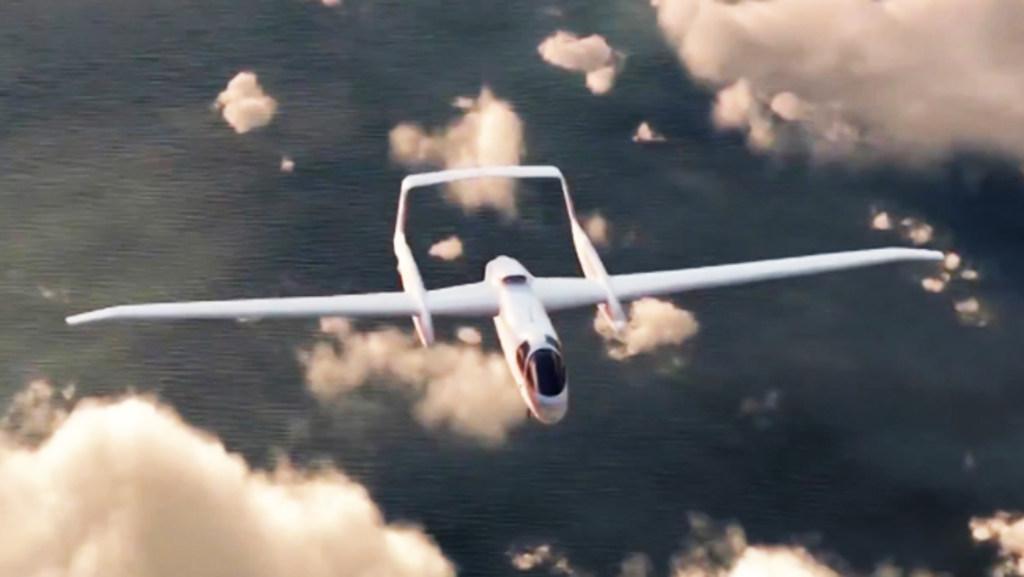China teases next-generation H-20 stealth bomber
CHINA has teased the world with a veiled glimpse of its secret new stealth bomber, and taken a swipe at the United States in the process.

CHINA has teased the world with a veiled glimpse of its secret new stealth bomber, and taken a swipe at the United States in the process.
It was just six-seconds long.
It was in a video promoting the Chinese state-owned Xi’an Aircraft Industrial Corporation.
It may have revealed the outline of China’s future stealth bomber.
It was certainly a troll of the United States’ defence company Northrop Grumman, which is building that country’s next generation aircraft.
The shot appears to be a deliberate mimicry of Northrop Grumman’s promotional video released during the 2015 Super Bowl. It later went on to win a contract to replace the US Air Force’s existing fleet of B-1 Lancer and B-2 Spirit bombers with a new aircraft based on an old design.

Northrop Grumman’s advert teased what looked like a huge flying wing, hidden by billowing drapes. The Xi’an advert — tweeted by the Global Times — also ends with a shadowy wide shot of a bomber under wraps. It is titled “The Next”.
The B-21 Raider is being sold as a budget bomber, using technology developed for the 1990s-era B-2 Spirit flying wings. But we don’t know for sure. The Pentagon has classified its cost as Top Secret — no doubt to avoid similar controversy surrounding the over-price, over-time F-35 Stealth Fighter project.
China’s development of its own super bomber is no secret.
But everything else about it is.

SHADOWS WITHIN VEILS
Chinese state-run media has dubbed it the H-20, but even this is uncertain.
Beijing only recently began building a modified version of a 1950s-era Russian bomber, the Tu-16 Badger. Dubbed the H-6K in Chinese service, it has given the expansionist nation significant new reach.
EXPLORE MORE: What we know about China’s J-20 Stealth Fighter
It can carry aircraft-carrier and island-attacking cruise missiles deep into the Pacific. Its missiles can even reach northern parts of Australia, if the aircraft takes-off from the illegal artificial island fortresses in the South China Sea.
And while the United States appears content to keep its own 1950s vintage B-52 Stratofortress bombers flying until they’re a century old, China is not.
China’s aviation giant, Aviation Industry Corporation, revealed a model jet, believed to be the US B2 stealth bomber-like model “H20â€, in a 9-second Easter egg in a video commemorating 60 years of its subsidy Xi'an Aircraft Industrial Corporation. https://t.co/yD5k0Ecc0O pic.twitter.com/kLWJkxSaXh
— Global Times (@globaltimesnews) May 9, 2018
In September 2016, the chief of the People’s Liberation Army Air Force (PLAAF) Ma Xiaotian told state-run media that the development of a new bomber was well under way.
RELATED: China’s first home-grown aircraft carrier just put to sea
Speculation had already been rife. In 2015, the China Daily published an article outlining requirements to turn the PLAAF into a “strategic force” — meaning capable of carrying and delivering nuclear weapons.
Xian H-20 long-range strike bomber, #China #PLAAF CG artwork. pic.twitter.com/2C9kZHR3i4
— baiwei (@baiweinov) September 2, 2016
It outlined a new bomber was being built to reach targets in what China has dubbed the “Second Island Chain”. It regards this as a boundary being used to contain its international ambition. It includes the Kuril and Japanese islands in the north, Guam and the Marianas, the Carolines and Indonesia in the south.
DELVE DEEPER: Here’s the US vision of future air combat
This means the new aircraft must have an operational range of about 8000km — without refuelling. To be effective, its weapons load must be at least 10 tonnes.
Just such an aircraft has been reputedly under development by China’s 603 Aircraft Design Institute since the late 1990s.

SHARP SWORD
While the authenticity of the scene in the Xi-an advertisement is uncertain, it makes sense that Chinese aviation developers would settle on a flying wing design.
Their reasons would be the same as that of US designers.
It offers the ability to build a large aircraft, with minimal protruding surfaces. This reduces the aircraft’s overall radar profile — a vital necessity for any strike aircraft attempting to get close to a target.
Whatever the case, China has been working on the project long enough for its stated goal of having a prototype flying in 2020 to be achievable.
KNOWN UNKNOWNS: Defence explores biotechnological warfare
China already has experience with flying wings. It is operating the Sharp Sword unmanned combat drone, and would have learnt aerodynamic lessons from its construction.
The bomber, which is likely to fly at subsonic speeds, would greatly improve China’s ability to attack America’s nuclear-powered aircraft carriers. If able to slip through the web of radars protecting these enormously valuable ships, a single H-20 could potentially unleash four powerful stealth or hypersonic cruise missiles. The aircraft carrier, and its escorts, would have fractions of a second in which to defend themselves.



